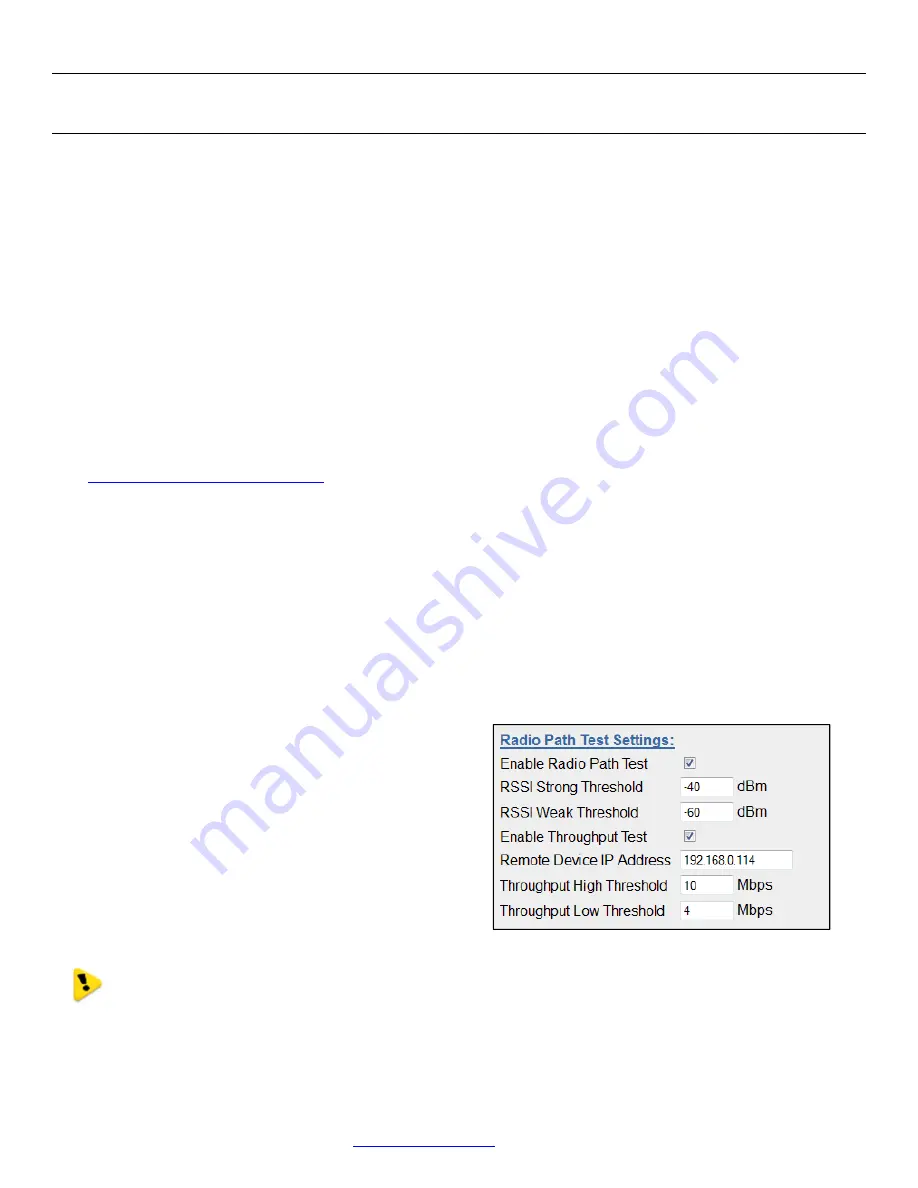
Weidmuller Wireless Ethernet Modem & Device Server WI-MOD-E-G/A User Manual
Rev.
2.16
www.weidmuller.com
85
4.7 - Testing Radio Paths
Connection and Signal Strength
The general procedure for radio range testing a link is fairly simple. Configure two units to form a link using automatic
radio rates. Install the Access Point at a fixed location. Take a laptop computer and the Client to each of the remote
locations, and analyse the link using the Connectivity webpage. If a beacon is heard from the Access Point, the Client will
update its Connectivity webpage with the received signal strength of beacon messages from the Access Point.
If the signal is strong enough, a link may be established, and the Connectivity webpage of the Access Point may be
opened. If the link is weak, the LINK led will go out, and the remote Connectivity webpage of the Access Point will fail to
load. Using this procedure, the signal strengths of units at both locations may be analysed, and traffic is sent between the
units whilst remote WebPages are opened.
Iperf Throughput Test
A more thorough test is to perform a throughput test which will check the amount of data that can be reliably achieved via
the Wireless link. There are a number of software tools that we can use to check the data throughput, i.e. FTP - file
transfer protocol, Iperf, Qcheck, etc.
The preferred application is “Iperf” which has been configured in each modem and can be enabled to perform this test. It
can also be run externally using Laptops at either end of the radio link. The Iperf/Jperf application can be downloaded
from
http://sourceforge.net/projects/iperf/
All of the above applications measure the raw data throughput and from this we can determine the amount of interference
from the measured and calculated data throughput levels.
The way “iPerf” works is a Server is enabled at one end of the link and a Client at the other. The “iPerf” Client will then
pass data over the link and calculate and display the throughput accordingly.
“iPerf” server can be run internally on the modem by enabling this feature on the Advanced Radio page of one of the
modems, see section 4.4 - “Throughput Test”. It can also be run externally on a PC or laptop connected at each end of
the radio link. See APPENDIX D - “External Iperf Test” for a detailed procedure on how to use Iperf to externally check
radio data throughput.
The internal “iPerf” is a basic cut down version of the standard “iPerf” and should be used as a guide only. For a more
comprehensive test “iPerf” should be run externally using Laptops or PCs at each end of the Wi-Fi link.
Internal Radio Test
The module also has an internal Radio Path test that will allow
you to perform a basic radio path test without the need for a
laptop or PC.
There are two tests that can be run, RSSI and Throughput;
Throughput can be disabled independently from RSSI however
disabling RSSI test will turn off both tests.
Typically, the Radio Path Test should be enabled at a modem
configured as a Client/Station
The Radio Path Test feature should not be enabled on a live system; it is intended for testing only.
Radio Path Test Settings
Enable Radio Path Test
Enables or disables the Radio Path Test.
RSSI Strong Threshold
Strong RSSI indication threshold
Figure 81 - Radio Path Tests
















































